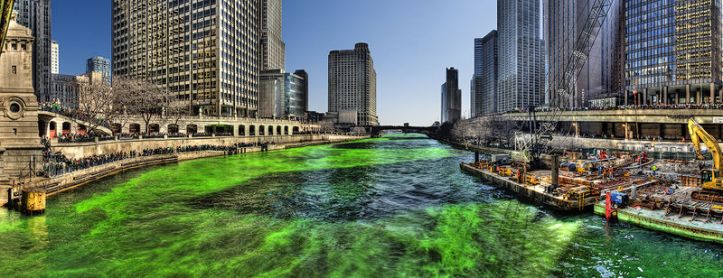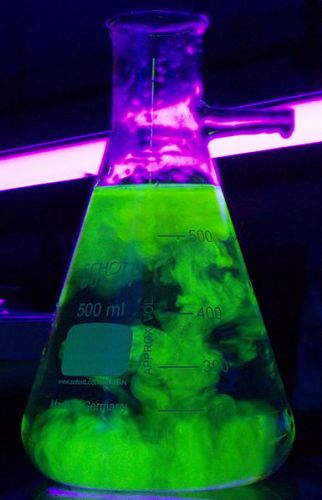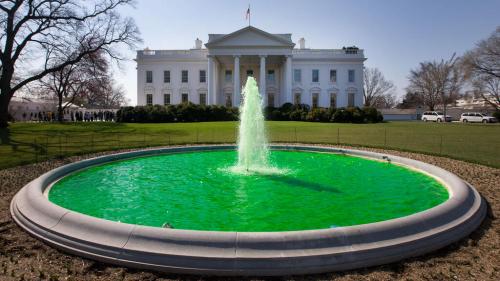Our last blog post featured lighting technology powered by algae, and this week is all about a different example of green-colored water: the Chicago River.
Every year since 1962, the Chicago River has been dyed green for the downtown St. Patrick’s Day parade. So how does this amazing color transformation relate to the Center for Sustainable Nanotechnology?

There are several aspects of this story that are relevant to sustainability. First, the literal greening of the river got started because of a figurative one: in the late ‘50s, the city was starting to address the horrible pollution in the river by using a fluorescent tracer to detect industrial waste leaking into the river.1 As the story goes, in 1961, friend-of-the-mayor Stephen Bailey saw a Plumbers Union worker with his clothes stained green from the pollution tracer dye, and had the idea of deliberately coloring the entire river green in honor of St. Patrick’s Day. In 1962 they used so much dye that the color lingered for a week; now the amount is calibrated to last about five hours on the day of the parade.2

Unfortunately, the dye they were using, fluorescein, can be a health hazard itself, so deliberately dumping 40 pounds of it into the river was environmentally problematic – not what you’d call sustainable. In 1966 the parade committee switched to what they describe as a non-toxic vegetable-based dye; the actual formula is a closely-guarded secret.3 Fluorescein (among other fluorescent dyes) is still useful for scientists to visualize flow,4 but it is reportedly no longer used for St. Patrick’s Day celebrations.

This holiday tradition is indirectly related to nanotechnology research, as well. For example, CSN researchers use fluorescence (though not fluorescein) to detect certain molecules on the surface of bacteria cells. One of our most popular posts explains how fluorescence makes highlighters glow. Because we don’t know the composition of the new non-fluorescein dye used for the Chicago River, we don’t know if it is technically fluorescent, which would mean that it re-emits absorbed light. We know that we perceive it as a green color so bright it seems to glow. “The better the sunlight… it becomes greener,” says Mike Butler, one of the people who has worked on the dyeing crew for years.6
If it is not truly a fluorescent dye, the substance used in the river would instead be what’s called a pigment. In that case, our perception of the green color is simply a matter of certain wavelengths of sunlight bouncing off the pigment, as explained in this blog post. Either way, our eyes are processing light waves with a wavelength around 521 nanometers, the emission maximum of fluorescein.7 Whether the green comes from light being emitted or reflected, it gives us a chance to admire the creative science behind a half-century-old holiday tradition.

Post updated March 20, 2015 to add fluorescein flow experiment image.
Want to know more? You can watch a time-lapse video of this year’s Chicago River dyeing process here.
1. Reardon, P. “The Dye is Cast” Chicago Tribune, March 16, 1995.
6. MediaBurn Archive “How they dye the Chicago River green” video, March 16, 2012.

Fun post, I learned Useful Stuff!